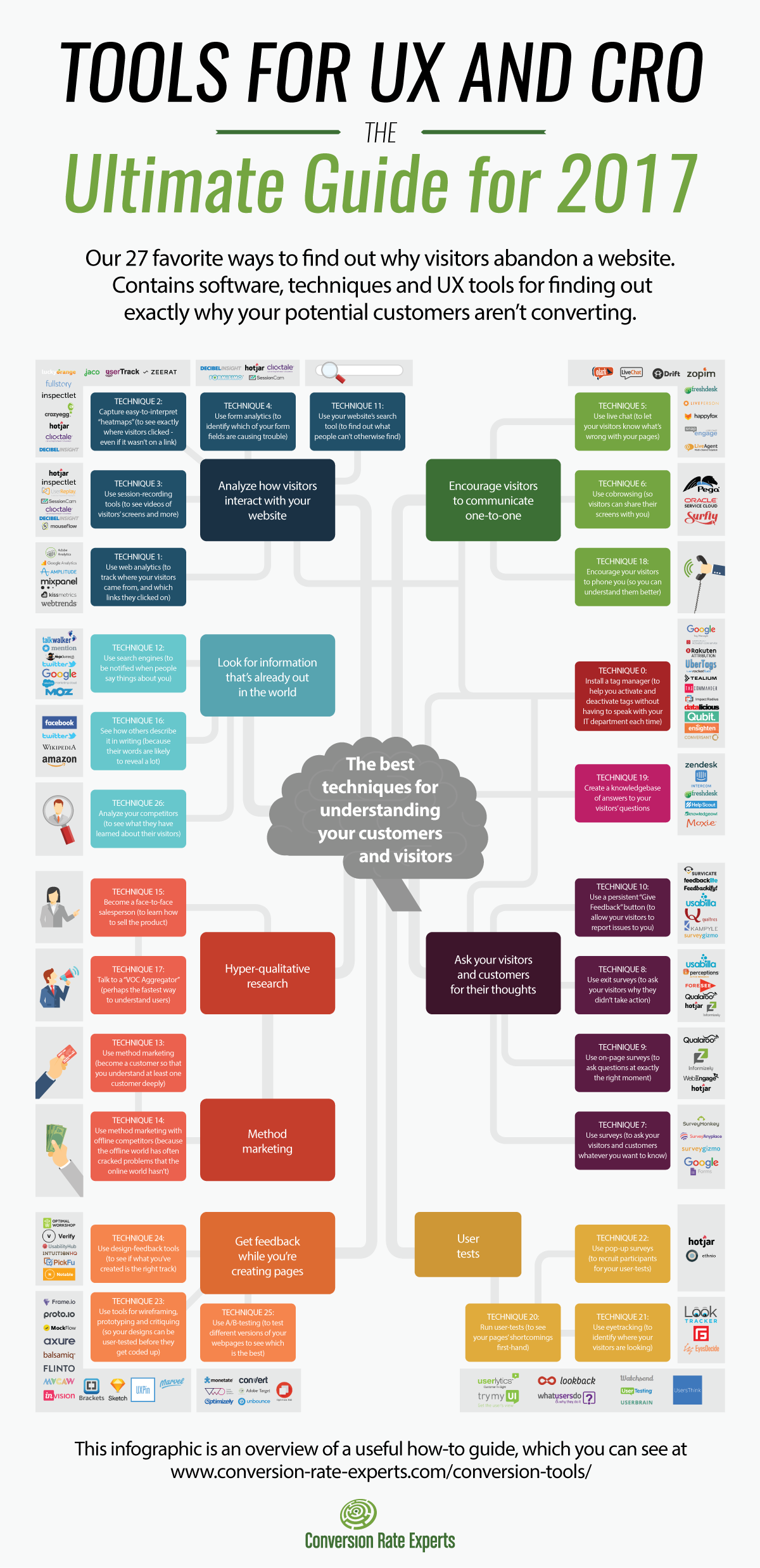Apply the customer-centric methodology that has doubled the sales of many websites
When we first launched Smart Insights nearly ten years ago, we chose a brand name that hinted at the power of using a data-driven approach for businesses to get more from their online marketing. For even longer, I personally have had a passion for helping businesses learn about the latest digital analytics techniques and best practices through my training, consulting and writing.
Since we launched, in our member resources, I and our expert contributors have worked hard to share best practices with our members on using digital analytics with the aim of increasing their conversion rates. At the same time, we have worked hard to improve our member onboarding experiences and increase our own conversion rates to our free and premium memberships
So I’m delighted to review Making Websites Win, a book which I have a close connection to; I know both the authors, and we have used their company, Conversion Rate Experts to increase our conversion rate as this write-up of our projects shows: How we boosted our conversion rate by 157%. I first met Karl and Ben when we shared platforms at several different digital marketing and analytics conferences and it’s great to see the techniques and examples they shared in their engaging talks now brought together in this book.
How will this book help you?
As you would expect from specialists on conversion rate optimization, the book’s title has a clear value proposition which is substantiated by the subheading!
Naturally, how the book will help you will depend on your personal current and future involvement in conversion rate optimization. Having read it, I think it will be useful for several types of people, but first, some context…
I think it’s fair to say that Conversion Rate Optimisation hasn’t delivered on its promise across all types of business. When AB and multivariate testing tools first became available over fifteen years ago, I expected that by now, they would be a lot more widely used in businesses of all types and used much more often by their agencies. The reality seems to be that it has been enthusiastically adopted by some companies in some sectors, but not ‘across the board’. For example, the mega digital platforms, the FAANGs like Facebook, Amazon and Google have long used an approach of continuously running structured experiments to improve experiences for their customers AND their monetization. Other pureplays like Dropbox, Expedia, Booking.com and LinkedIn.com also use experiments of their UX as a key part of their process and have shared their results via many a growth hackers convention.
Yet I don’t see a structured approach to improving online leads and sales conversion in many businesses who are still grappling with their digital transformation. This includes many business-to-business and more traditional organizations who don’t have a transactional site. I also don’t see many specialist conversion rate optimization companies – I can name just a handful in the UK and the US. I think this is because there is a poor understanding of the technique amongst business leaders in larger organizations.
Given, this backgrounder I’d like to think this book can help more businesses take advantage of CRO when people in these roles get to read it…
Business leaders and budget holders
The first part of the book ‘Why most website design is done wrong’ has a suitably provocative and I think, apt title to get the attention of the Highest Paid People in companies and show how their customer experience budgets can be better deployed.
Unlike many books on CRO, this section doesn’t dive straight into the technical aspects of CRO. Instead, it explains the definition and benefits of CRO and the principles of what the authors call Scientific Web Design in a straightforward and commercial way. These are illustrated through examples of clients that Conversion Rate Experts have worked with, including some of the world’s largest businesses like Facebook, Google and Dropbox mentioned above. They also break down the customer journey to show that by continuously testing different parts of the funnel how large improvements can be achieved.

This section is useful for showing how you can construct a business case and makes CRO much more compelling than for many books on the topic. The examples do tend to focus on transactional businesses though, which is a shame since I believe the arguments for using CRO are much wider. Hopefully, the examples from other sectors will still inspire non-transactional businesses to take action.
Marketing managers and digital marketing managers
If this is you, then there are two main reasons why you need this book. First, if you’re making the case to budget holders, get them a copy – section one gets straight into the how and they why, as I’ve explained.
The second reason is Section 2: Diagnosis – the ultimate guide to tools and techniques to understand how your website can be improved.
If you’re not already actively using AB testing systematically, it may not simply be lack of budget. After all, many tools are relatively low-cost, or in the case of Google’s recently released Optimize, free. It’s one thing to put in place a tool, it’s much tougher to put in place a CRO programme, since it’s it’s tough to know where to start.
This section of the book will help you build up a toolset and understand the process for creating a programme.
So far, in this review I have gone along with the common misconception about structured testing, i.e. that it’s all about putting in place an AB testing tool and a process to create and run tests. Yet, your AB testing tool should be just one of your suite of tools. As our Essential Digital Marketing tools wheel infographic shows, there are many tools which can support the process of lead and sales conversion.
The hint that you need to consider other tools (many of which are relatively low cost) are in the ‘customer-centric’ part of the title of the book. This is one of the unique aspects of this book, i.e. that it shows you to put in place a customer research programme to really get inside the minds of your audiences to understand who they are, what they are looking for when selecting your type of service and what their perception of you is, via your website. This section is structured into 15 different types of techniques and tools to understand your customer better (many are provided by a single provider).

Source: Tools for UX and CRO: The Ultimate Guide for 2017.
User experience and CRO specialists
Last but not least, the book will help those of you who already BELIEVE and are already working hands-on evangelizing and improving the use of user experience, analytics or CRO. So, whether you work client-side as a UX or analytics specialist in-house or you have a similar role as an agency or consultant, this book can help you too.
You will want to review your approach to selling in structured testing to colleagues or clients in Section 1, review your process and tool based on Section 2 and absorb Section 3: Making your websites – the most common problems that make website visitors abandon and proven, easy-to-implement solutions.
Section 3 drills down into more specific tips of persuasion techniques to use including a lot of detail on copywriting for headlines, features and benefits and guarantees, navigation, page layouts and many other techniques. I love the way that Karl and Ben bring the subject to life and make the techniques memorable by their quirky labels for techniques. Here are some I picked up on when reading the book:
- DiPS – Diagnose > Problem > Solution
- Conversion Killers
- Meak Tweaking
- Objection – counter-objection
- Future-pacing
- Proof-magnets
- Hazelnut trails
- Reductive tests
One point for marketers to consider in their CRO is the bigger picture. This book is laser-focused on website design, but conversion often involves many other offsite touchpoints as shown in our customer lifecycle infographics, for example retargeting via ads and email marketing. These aren’t covered directly, but the recommendations on persuasive copy can be applied here. I would also have liked to see more on how web personalization works alongside AB testing and how Artificial Intelligence may change this process in the future. For many businesses, this will be way into the future, so getting them to use the testing techniques detailed in the book will be a huge step forward.
Final thoughts
In the future, businesses that fail to adopt a data-driven approach to optimization will struggle to compete with those that do. That’s why I’d highly recommend Making Websites Win to (i) business leaders and budget holders, (ii) marketing managers and digital marketing managers, and (iii) user experience and CRO specialists.
As someone who wears all of these hats as the co-founder of Smart Insights and an active consultant and trainer working with many different types of business, I’ll be certainly returning to Making Websites Win to help spread the word about the power and techniques of Scientific Web Design.
Learn more and buy the book from this page on Conversion Rate Experts’ website. (There’s a special offer on the Kindle version at the moment.)